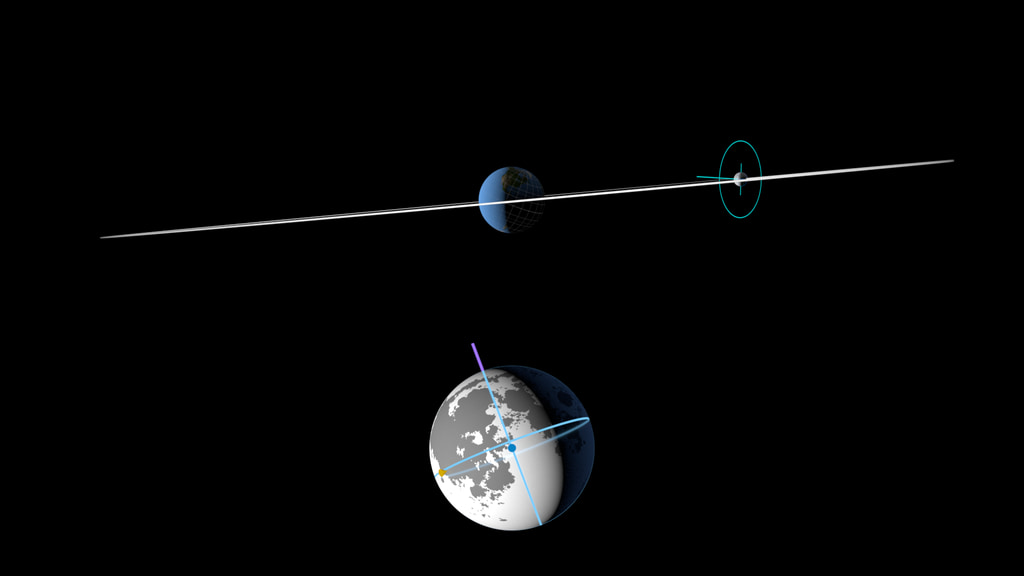Moon Essentials: Libration in Longitude

A 2-frame GIF showing the extremes of lunar libration in longitude.
Libration in longitude is an apparent east-west, side-to-side rotation of the Moon, as if the Moon were slowly shaking its head "no." This motion slightly changes the Moon's face as seen from Earth, revealing thin strips of terrain over the eastern and western edge of the Moon. This repeats in a cycle lasting about 27.55 days, the average time between perigees (closest approaches to the Earth) called the anomalistic month.
The visualization on this page shows how libration in longitude is an effect of the Moon's orbital speed. The Moon spins on its axis at a slow, steady rate, turning once each orbit, which is why it always shows us more or less the same face. But it moves along its elliptical orbit at a speed that varies depending on how close it is to the Earth. Along half of its orbit, the Moon is moving faster than its spin, which eventually allows us to see a bit more of its eastern side, while along the other half of its orbit, it moves slower than its spin and shows more of its western side.
In the animations, the red dot marks the position of a fictitious moon moving in a circular orbit at a constant speed. The real Moon pulls ahead or lags behind the red dot as it moves past the nearest and farthest points in its orbit, called perigee and apogee. The arrows attached to both Moons show that they spin at the same constant rate. The lines from the Earth are our lines of sight, and the angle between the real Moon's line and its arrow is the libration in longitude.
This angle is the longitude component of the sub-Earth point, the lunar longitude at which the Earth is directly overhead, or the longitude line passing through the center of the Moon's disk as seen from Earth. This point is marked with a blue dot on the lunar globe inset.
Libration in longitude shown in three parts: the full lunar orbit, a close-up centered on the Moon, and a Moon globe with subsolar and sub-Earth points.
Libration in longitude close-up, with the view centered on the Moon.
Credits
Please give credit for this item to:
NASA's Scientific Visualization Studio
Visualizer
- Ernie Wright (USRA)
Technical support
- Laurence Schuler (ADNET Systems, Inc.)
- Ian Jones (ADNET Systems, Inc.)
Release date
This page was originally published on Monday, June 24, 2024.
This page was last updated on Friday, December 1, 2023 at 3:34 PM EST.
Missions
This visualization is related to the following missions:Series
This visualization can be found in the following series:Datasets used in this visualization
DE421 (JPL DE421)
ID: 752Planetary ephemerides
This dataset can be found at: http://ssd.jpl.nasa.gov/?ephemerides#planets
See all pages that use this dataset
Note: While we identify the data sets used in these visualizations, we do not store any further details, nor the data sets themselves on our site.
